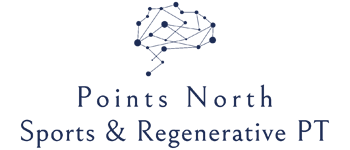
Swimmer’s Shoulder Seminar
Diaphragmatic Breathing
Practice position: Feel for downward compression of abdominals by diaphragm, and upward movement of lower border of rib cage. Make sure you exhale completely underwater and do not hold your breath!

Core strength/stability
- Plank—start on your hands if you are a beginner and do not have wrist pain. Work up to a 1-minute hold and then try performing the exercise on your elbows. Hold your planks a little longer each time you perform them, the longer you can hold good form the better it will be for your swimming! And accept the fact that it will be uncomfortable 😉

- Trunk rotation—To 1) lengthen your reach, 2) avoid overusing your biceps tendon and impinging on your supraspinatus tendon, and 3) avoid turning/lifting your head and causing cervical nerve root impingment. You can perform with a theraband or the cable column, or trunk rotation with a V-sit:



Flexibility
For your thoracic spine/scapular mobility:

Anterior and lateral cervical muscles:


Foam rolling: Roll parallel to your spine with your head and neck firmly supported as pictured below. Start out rocking side to side; then try 1) gently reaching up and out to each side and think about opening up each side of your rib cage, 2) perform “snow angels,” then 3) arms positioned in a “goal post” (below). These moves will help mobilize your scapulae and thoracic spine, anterior cervicals, anterior shoulder and chest wall, and help your posture.

The Swimmer’s Seven: For posterior rotator cuff and scapular musculature strength and stability
External rotation with band Adduction: pull band to your Side, palm forward


Up & out diagonal Lat pulldown with band


I’s, T’s and Y’s: Perform on hands and knees, or with one hand/one knee on weight bench



Ways to train your swimming “prime movers”—serratus anterior, pectorals, latissimus dorsi, rhomboid major and minor, middle and lower trapezius, triceps. Training these stronger muscles will help wake them up in the water, and you will be less likely to overuse your rotator cuff, which is meant for stability, not power!
Bench press. Push ups are great too!

Flys with weights

Low rows on the cable column

Rear deltoid/reverse fly machine

Seated row

Standing lat pulldown: Love love LOVE this exercise for giving us the feel of the bent arm pull!

Pull ups, assisted or unassisted: If you can do one, eventually you can do 3 sets of 10!


Background
Swimmer’s shoulder: A term coined by Kennedy and Hawkins in 1974, which they defined as “a common painful syndrome of repeated shoulder impingement in swimmers.” The term today is broader, referring to any painful shoulder condition affecting swimmers, including but not limited to shoulder impingement (pressure on the rotator cuff by one or more of the shoulder structures), rotator cuff tendinitis, bicipital(biceps tendon) tendinitis, or cervical nerve root impingement.
Statistics report that 1 out of 6 swimmers is affected by swimmer’s shoulder; it is likely that the number is much higher, affecting most if not all swimmers at some point. The condition is most commonly seen several months to a year after beginning a regular swimming routine, or after increasing distance volume too rapidly.
Anatomy
A healthy shoulder requires a delicate balance between the cervical spine, thoracic spine, shoulder and scapula. The shoulder complex consists of the glenohumeral joint (the ball of the humerus articulates with the glenoid fossa located in the scapula) and the scapula. The four rotator cuff tendons (supraspinatus, infraspinatus, teres minor and subscapularis) are intended to be stabilizers of the glenohumeral joint and not power muscles. The scapula assists glenohumeral movement by rotating upward one degree for every 2 degrees of glenohumeral movement. Too much or too little scapular movement can be problematic. The scapular area muscles—upper, middle and lower trapezius, rhomboid major and minor, and serratus anterior are responsible for scapular rotation.
The prime movers—the power muscles–activated during proper swim technique are the serratus anterior, pectorals, latissimus dorsi, rhomboids major and minor, middle and lower trapezius, and triceps. Decreased strength in these muscle groups may lead to overuse of the rotator cuff.
The rotator cuff and scapular muscles are innervated by the C4-T7 nerve roots, so good alignment of cervical and thoracic spine is very important. Pressure or tension on the nerve roots can cause mild to moderate weakness in the rotator cuff and/or scapular muscles which can disrupt the alignment of the shoulder complex and contribute to pain.
